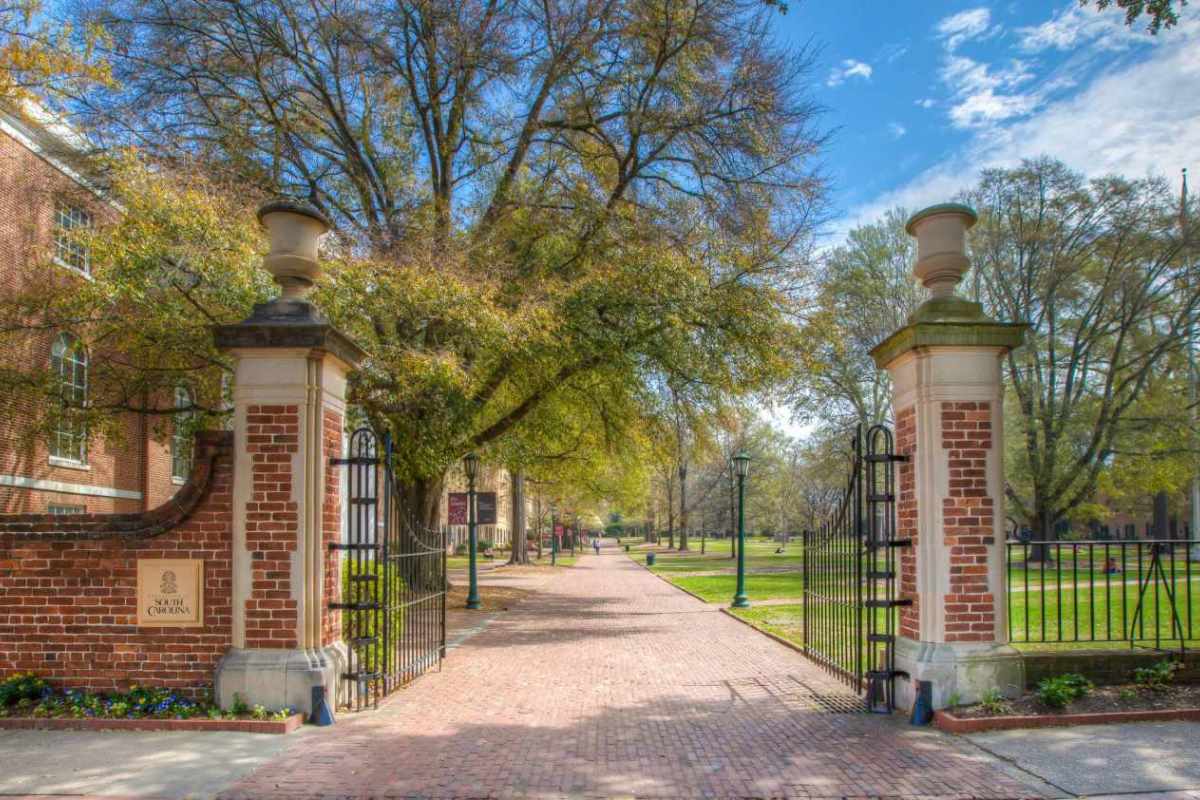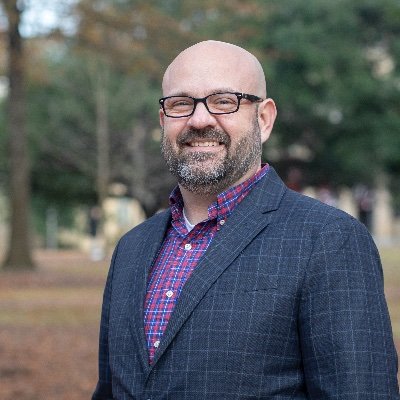
The State of Student Transition and Success in Higher Education
Dallin George Young, Assistant Director for Research and Grants at the National Resource Center for The First-Year Experience and Students in Transition, draws from the center’s data for an in-depth look at the present and future of student transition and success in higher education.
 The idea that new students need support during their transition to college is not a new or unfamiliar idea. When anyone enters a new community, they must learn the rules, communication, expectations, and other practices that will help them successfully navigate this novel environment. Since 1988, the National Resource Center for The First-Year Experience and Students in Transition has been conducting research on the ways colleges and universities have structured themselves to support students in transition. Through this research, the center has learned a lot about the current trends among educational initiatives, co-curricular programs, and high-impact practices that support students in the first-year experience, sophomore year, senior capstone experience, and other student transitions. In the five sections that follow, we describe new trends and issues as well as future directions for scholarship and practice in the field of student transition and success.
The idea that new students need support during their transition to college is not a new or unfamiliar idea. When anyone enters a new community, they must learn the rules, communication, expectations, and other practices that will help them successfully navigate this novel environment. Since 1988, the National Resource Center for The First-Year Experience and Students in Transition has been conducting research on the ways colleges and universities have structured themselves to support students in transition. Through this research, the center has learned a lot about the current trends among educational initiatives, co-curricular programs, and high-impact practices that support students in the first-year experience, sophomore year, senior capstone experience, and other student transitions. In the five sections that follow, we describe new trends and issues as well as future directions for scholarship and practice in the field of student transition and success.
Shifts in the First-Year Seminar
In 2017, we conducted the first-ever administration of the National Survey on The First-Year Experience (NSFYE) and found a surprising – and at first glance, alarming – finding regarding first-year seminars (FYS). Our estimates on the prevalence of FYS across the US had been increasing since 1988 on our National Survey of First-Year Seminars (NSFYS), reaching a high-water mark of nearly 90% in 2013. However, when we expanded the survey to include other first-year programs in the NSFYE, the proportion of the sample reporting an FYS dropped to 73%.
After some initial panic that we had broken our survey, we came to recognize two things that this finding represented. First, our previous surveys likely suffered from some participation bias which overestimated the prevalence. Campuses that had FYS were more likely to respond to a survey on them; institutions that did not were less likely to respond. Second, participation bias only explained some of the decreases. In addition, we found by matching responses over previous administrations that there was around a 10-point decrease in the prevalence of FYS, indicating that the decline was a very real phenomenon.
So, why is this happening? The FYS has historically been a star student success program on campuses and likely the predominant form of first-year student support. Yet, the 2017 NSFYE illustrated that colleges in the US have now adopted a proliferation of first-year programs. Over 70% of respondents reported offering academic advising, orientation, early alert, and first-year seminars aimed specifically at first-year students. There were an additional 10 first-year programs that were identified by more than half of survey respondents. Colleges are no longer relying on one or two key initiatives, such as the FYS, to meet their first-year student success objectives. Instead, campuses are utilizing multiple approaches to support the development, learning, and success of first-year students.
Creating a “Constellation” of First-Year Programs
The implication of these findings is that institutions are responding to calls from experts that the First-Year Experience is not a single program, but requires a comprehensive, cohesive, and coordinated approach. Greenfield, Keup, and Gardner (2013) suggested that a first-year experience is more than a collection of star programs and should represent a constellation of support. First-year programs are somewhat coordinated, with the overall average rating of coordination a 4.69 on a 7-point scale. These efforts are most frequently coordinated through first-year program offices, cross-functional first-year teams, and first-year program committees. However, only about 40% of institutions reported any of these coordinating structures. This kind of cross-functional alignment has been recognized as important by higher education scholars and organizations that support professional standards, such as the Council for the Advancement of Standards in Higher Education (also known as CAS) who recently published a Cross-functional Framework on the First-Year Experience, in partnership with the National Resource Center.
Importance of Advising in Student Support
One of the most consistent findings that has emerged across our national surveys is the importance of advising in supporting students in transition. In the 2017 NSFYE, more than 80% of respondents reported offering first-year specific advising, which made it the most common first-year program in the sample. What’s more, it was the most frequently named first-year program that institutions use to achieve their first-year objectives, used by more than 60% of the sample. Similarly, when institutions responding to the 2019 National Survey of Sophomore-Year Initiatives (NSSYI) were asked to identify the sophomore-specific initiative that reached the most students as well as the ones that were used to achieve campus objectives for sophomores, academic advising was the program most frequently identified by a significant margin.
Sustained Support
The question remains how advising in the first two years can set students up for success in other transitions, such as transfer, the senior year, or life after college. Advising is well-positioned to be a bright star in an integrated constellation of first- and second-year experiences on campus. However, more remains to be explored in terms of how the purpose of advising is communicated to students and other offices on campus in a longitudinal approach to supporting transitions.
In our surveys on the first-year, sophomore, and capstone experiences we have seen that institutional objectives at these three points shift in response to students’ needs (see Skipper, 2019). For example, the top campus objectives for the first year included academic success strategies (80.4%), academic planning or major exploration (75.8%), connection with the institution (75.0%). In the sophomore year, these shift toward career exploration and/or preparation (49.0%), followed by academic planning (41.6%) and academic success strategies (35.7%). The focus on careers carries forward to capstone experiences with career preparation (71.2%), employment or job placement (62.6%), and graduation (61.3%).
Similar to the idea of cross-functional alignment, institutions need to consider how they might engage in sustained support or vertical alignment to respond to students’ changing needs and to create a coherent educational experience. This is particularly important – and challenging – when students transfer and find themselves in new territory. To that end, in 2021 the National Resource Center will be embarking on a newly created National Survey of Transfer Student Experiences to better understand the way institutions structure transfer student environments, experiences, expectations, and supports.
Transition: It’s about Participation and Community
Building on previous work on supporting transitions, the Research team at the National Resource Center has begun exploring how definitions of transitions are shaping the design and execution of programs to support college student success. We are currently carrying out a systematic review of research literature to better understand and describe the ways that transition is or isn’t being defined and described. Initial results suggest that there are multiple ways transitions are being considered; our work will offer more clarity to the research and practice around transitions.
As part of this work, we have been looking for ways to build on the work on theoretical conceptualizations on transitions. One promising avenue we have found is in the application of the work of Lave and Wenger’s Legitimate Peripheral Participation to student transitions. In a paper presented at a recent ASHE conference, Young & Bunting described that first-year students enter higher education as novices in one or more communities of practice and move from positions of periphery as consumers toward positions as full(er) participants and contributors. We are excited to pursue this line of thinking and to engage in research that will describe the ways institutions are either working to facilitate participation in campus communities of practice or marginalizing students – particularly those in minoritized populations – by holding them in positions of peripherality.
Visit the Research at the National Resource Center for more information.